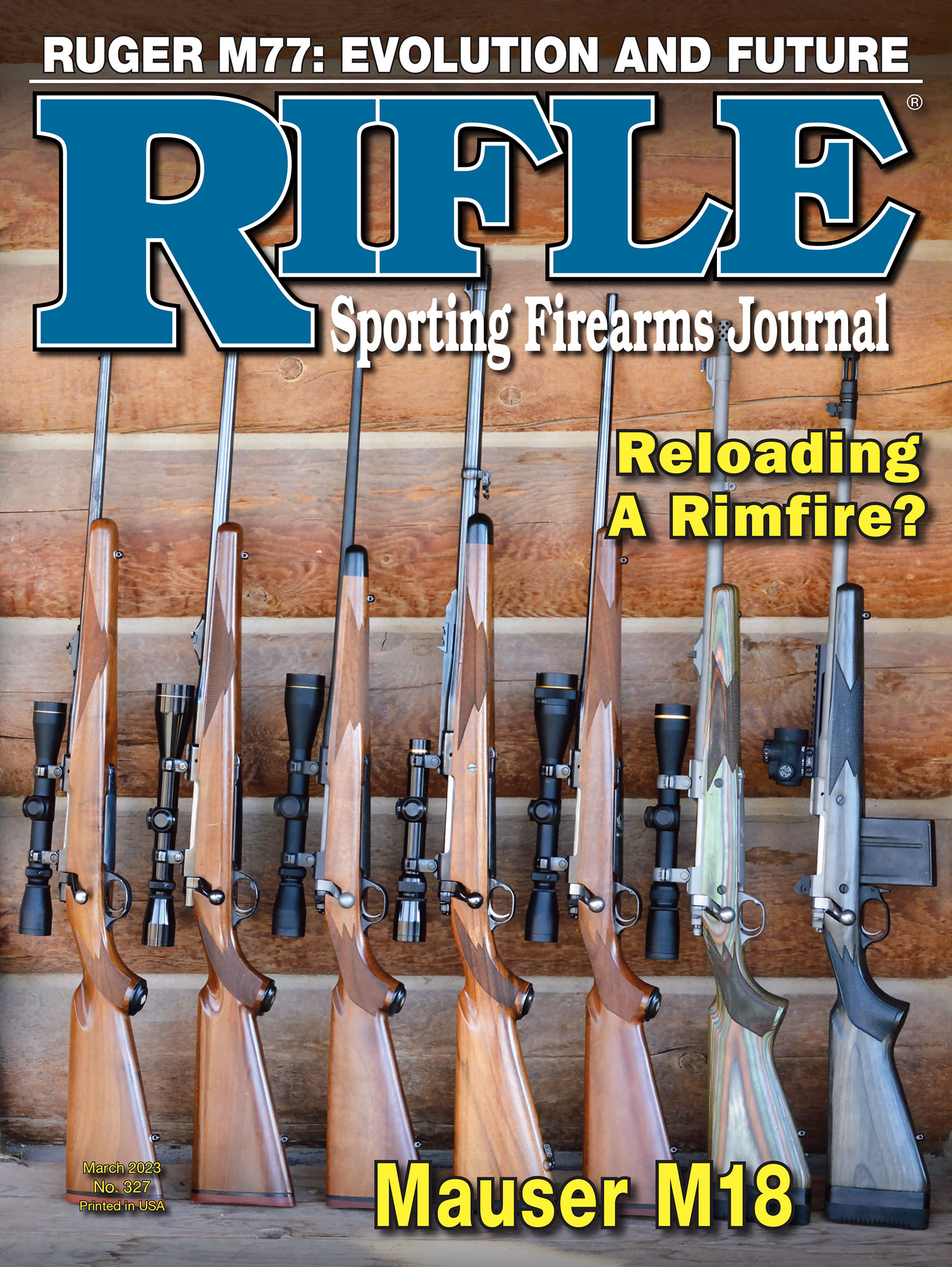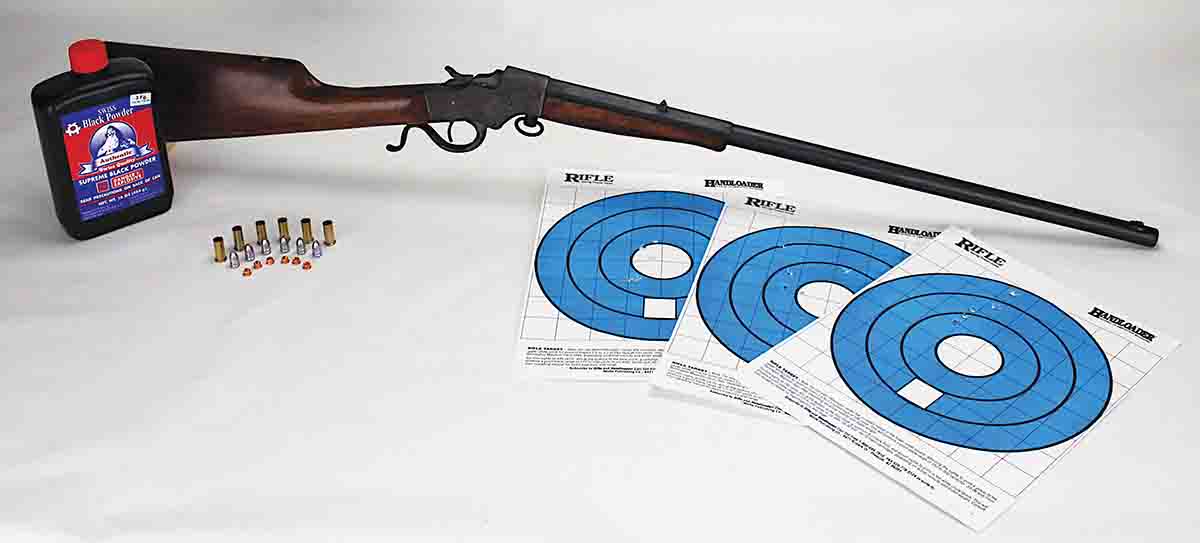
Quality Cartridge adapters make it possible to get a Stevens Favorite .32 S&W Long wall hangar back to the range and field.
Joshua Stevens first patented his swinging block rifle in 1884, a model known as the “Side Plate” because, well, it had one for accessing the innards. The J. Stevens Arms & Tool Co. of Chicopee Falls, Massachusetts, made Side Plates in two sizes; the larger came to be called the Model 44 and the smaller, the “Favorite.”
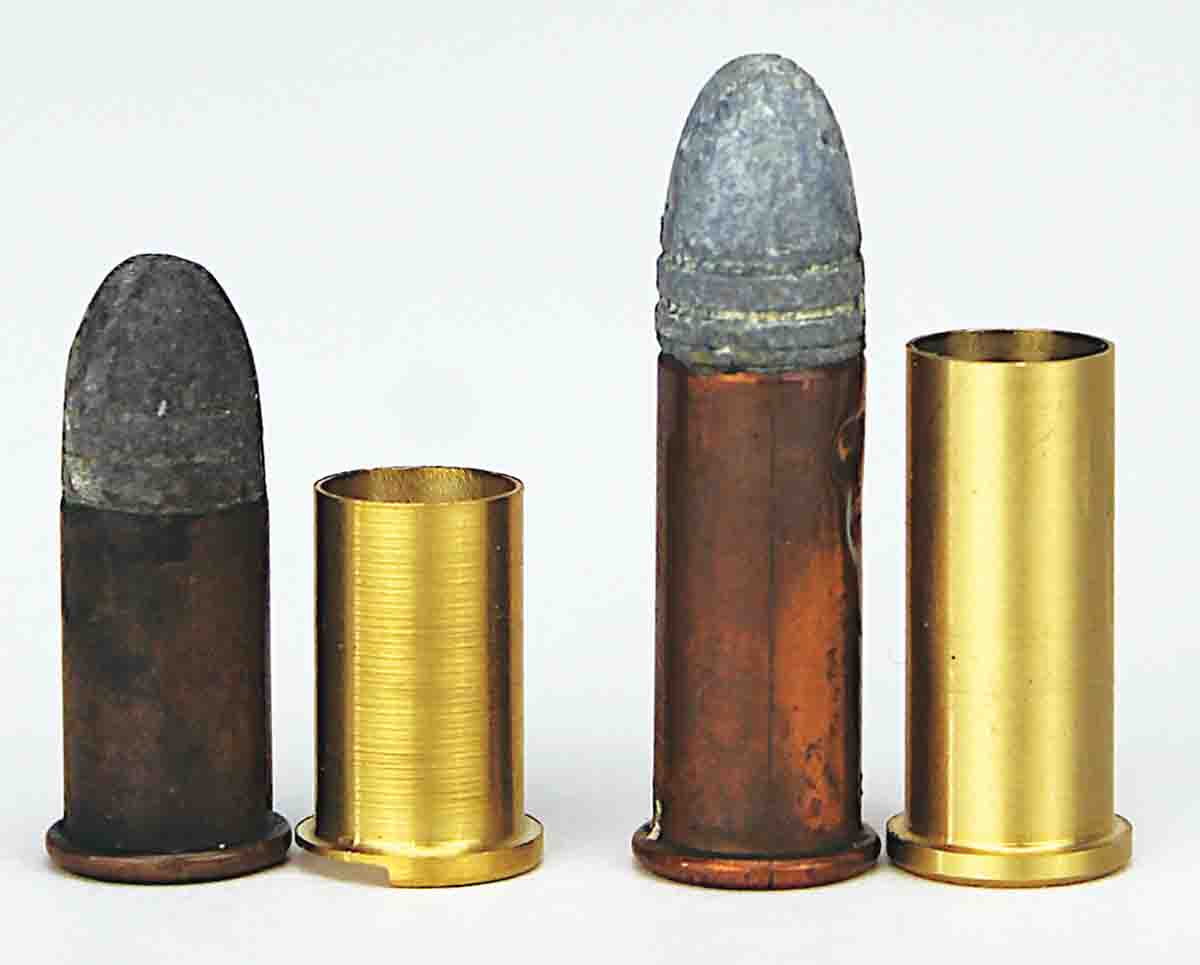
Original .32 S&W Short (left) and .32 S&W Long (right) cartridges are shown with Quality Cartridge adapters.
The one here is not a Side Plate Favorite, but the later, solid frame-type patented in 1889 and subjected to so many factory changes over the next several decades, that identifying specific years of manufacture is an inexact pursuit. Frequently, rifles were not stamped with serial numbers or even with cartridge chambering, much less model designation. The rifle presented here, for example, sports matching serial numbers on the frame and barrel, but nothing at all indicating its chambering. There is no factory record of serial numbers, and how many Favorites were manufactured is unknown, but reckoned at around a million rifles.
Stevens produced the Favorite until about 1939 in five models, the No. 17, 18, 19, 20 and 21, the latter four being essentially modifications to the basic No. 17. Numbers 18 and 19 differed only in the sights, and the No. 20 was a smoothbore chambered for .22- or .32-caliber rimfire shotshells. Number 21 was first the “bicycle rifle” that combined the Favorite’s easy takedown with a shortened barrel, allowing a cyclist to carry it in a backpack carrying case. When Stevens discontinued the bicycle rifle around 1910, it transferred the No. 21 designation to the Favorite Ladies’ Model. Except for a few rifles chambered in .22 Winchester Rimfire (.22 W.R.F. and aka 22-7-45), Stevens apparently chambered the Favorite rifles exclusively in .22 CB, BB, Short, Long and Long Rifle, .25 Smith & Wesson (S&W) Long and .32 S&W Long.
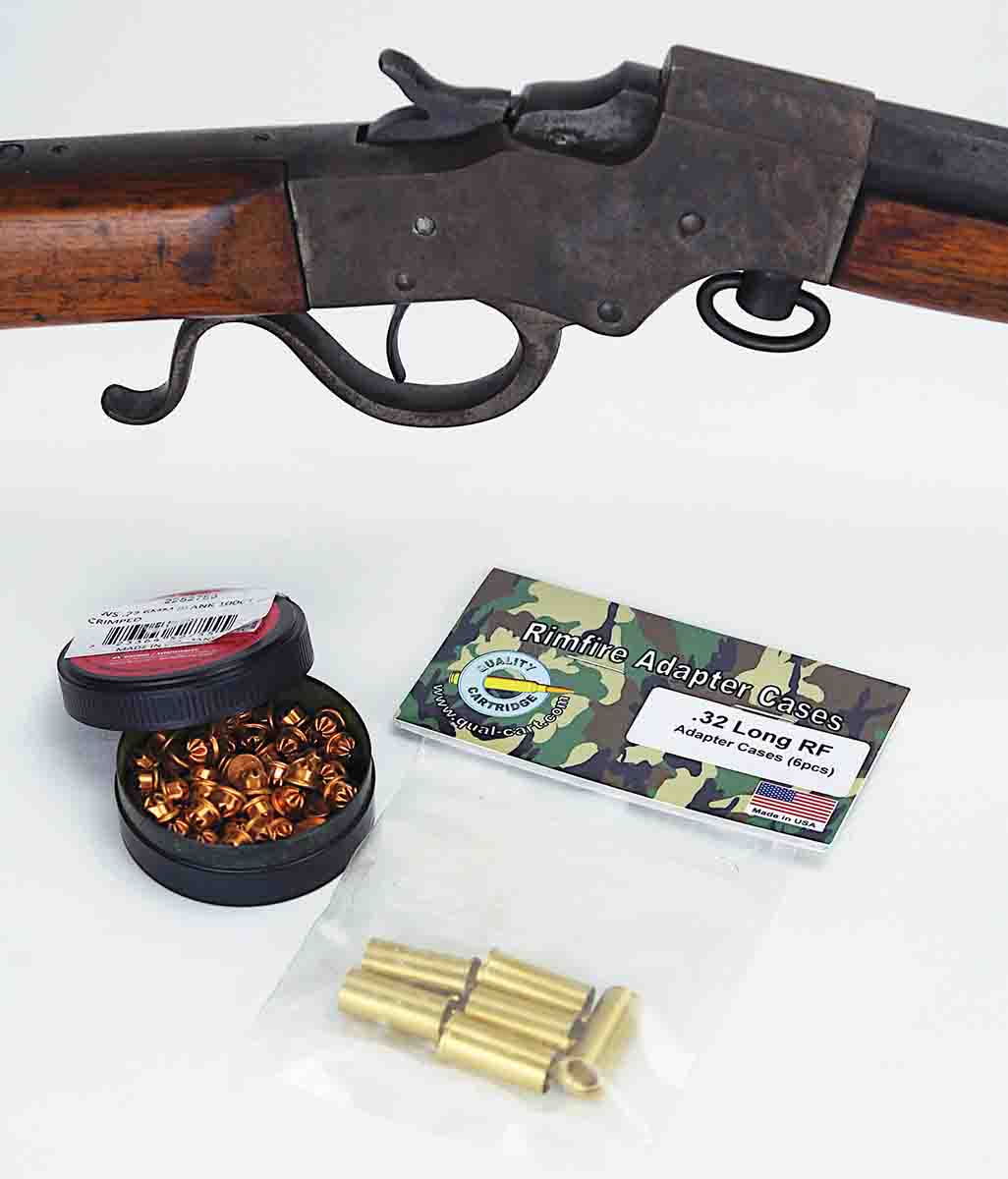
Quality Cartridge .32 S&W Long adapters utilize .22 Short blanks to ignite charges of black powder.
Handling the Favorite, it’s easy to understand why it was also known as the “Boys’ Rifle.” At a svelte 4 pounds, the Favorite weighs about the same as a large pistol; it balances exactly at the swell on the forearm so is a pleasure to carry in the field, even without a sling. The barrel takes up 22 inches of the overall 36 inches measured from muzzle to buttplate, and length of pull is 13 inches. Turning the ringed takedown screw under the chamber allows easy removal of the barrel for cleaning or changing calibers.
The forearm and buttstock wood still wear the factory finish, with no cracks or splits and only a single incidental gouge on the comb. Bluing is remarkably even and dark for its age, and some color case hardening still appears on the receiver and lever. On the downside, a Lyman Borecam revealed pitting reminiscent of photos of the far side of the moon. The rifling is so shallow that a tight-fitting patch on a cleaning rod had difficulty grasping it to determine twist rate (which appears to be 1:22). Complete disassembly and cleaning helped smooth functioning.
Aids to determining this rifle’s specific model and manufacture date are the “APR 17 94” patent date stamped on the half-round, half-octagonal barrel, the ringed takedown screw and the “bow-type” mainspring. This is a Stevens Favorite Model No. 17, made sometime between 1894 and 1915, and it left the factory chambered in .32 S&W Long, so it also chambers the .32 S&W Short.
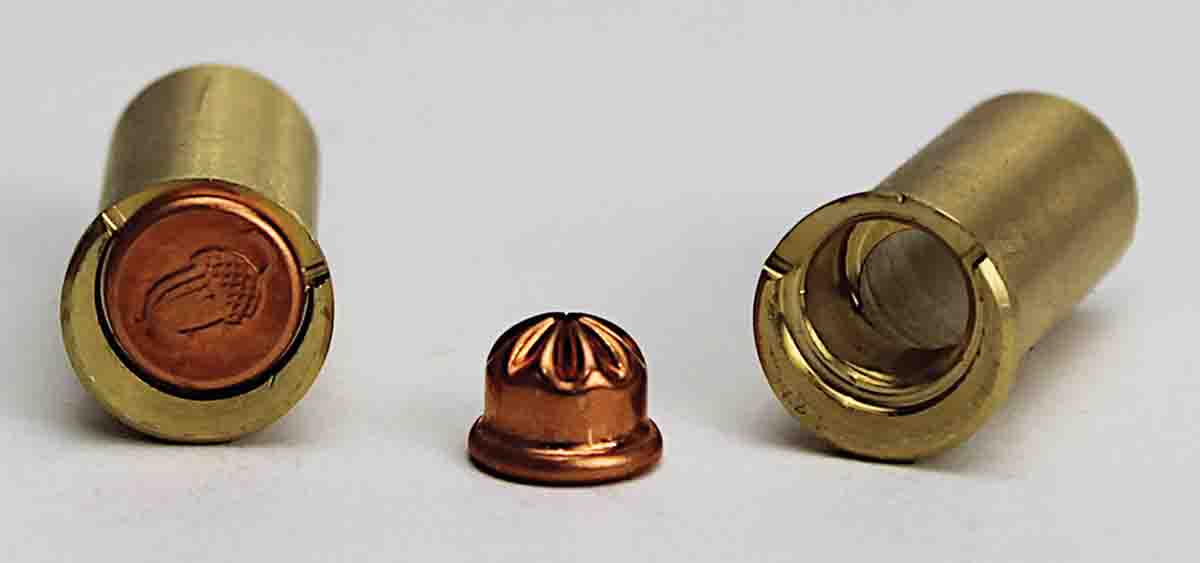
The firing pin strikes the rim of the .22 Short blank when the adapter is properly oriented in the chamber.
The little rifle suffered an ailment common to the species, “drooping lever” syndrome. Sometimes, tightening loose breechblock and lever screws will eliminate the droop, but for most Favorite rifles there’s nothing to be done about it except to replace parts. Fortunately, however, this particular Favorite has a breechblock tension screw (not all Favorites have it); a few turns increased the pressure between breechblock and lever to snug the lever up against the frame.
Smith & Wesson introduced the .32 S&W Short in 1860. No barn burner, the .32 S&W Short burned 9 grains of black powder to send an 80-grain lead bullet at about 935 feet per second (fps), producing a muzzle energy of 155 foot-pounds. Its cousin, the .32 S&W Long, had only slightly improved performance, launching the same bullet with a 13-grain black powder charge at 1,030 fps and 188 foot-pounds of muzzle energy. They were popular small game and plinking rounds that survived the transition from black to smokeless powder and remained in limited production into the 1970s. Today, they’re about as prevalent as the stegosaurus, and recreating the cartridges has had obstacles insurmountable to the ordinary handloader – until now.
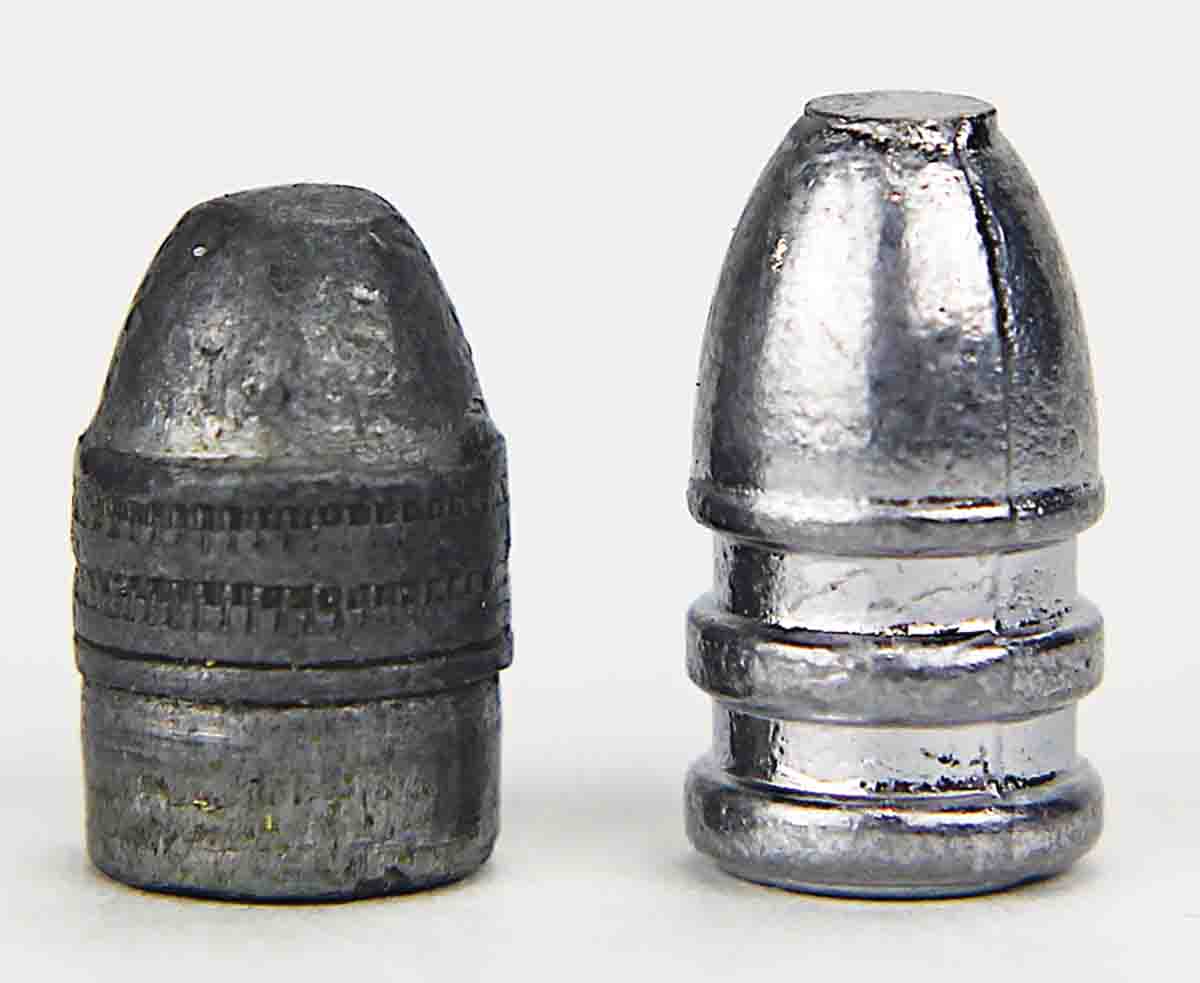
Original .32 S&W Long bullets (left) were heel-base, but a standard profile bullet (right) worked in the adapters, thanks to its hollow base.
To handload the .32 S&W Long, the second challenge is in the heel-base bullets, and we’ll get to that. The first challenge is in the rimfire cartridge case itself, for obvious reasons. A solution comes from Quality
Cartridge (Qual-Cart.com) in the form of clever, reusable brass cartridge adapters that accept ordinary .22 Short/6mm Flobert blanks as primers to ignite charges of black powder. At present, Quality Cartridge offers the rimfire adapters in both .32 S&W Short and .32 S&W Long for $39 per half dozen, with other rimfire caliber adapters in the works. The .32 S&W Short cartridge is identical to the .32 Long Rimfire cartridge, except for case length, and can be fired in the .32 S&W Long chamber.
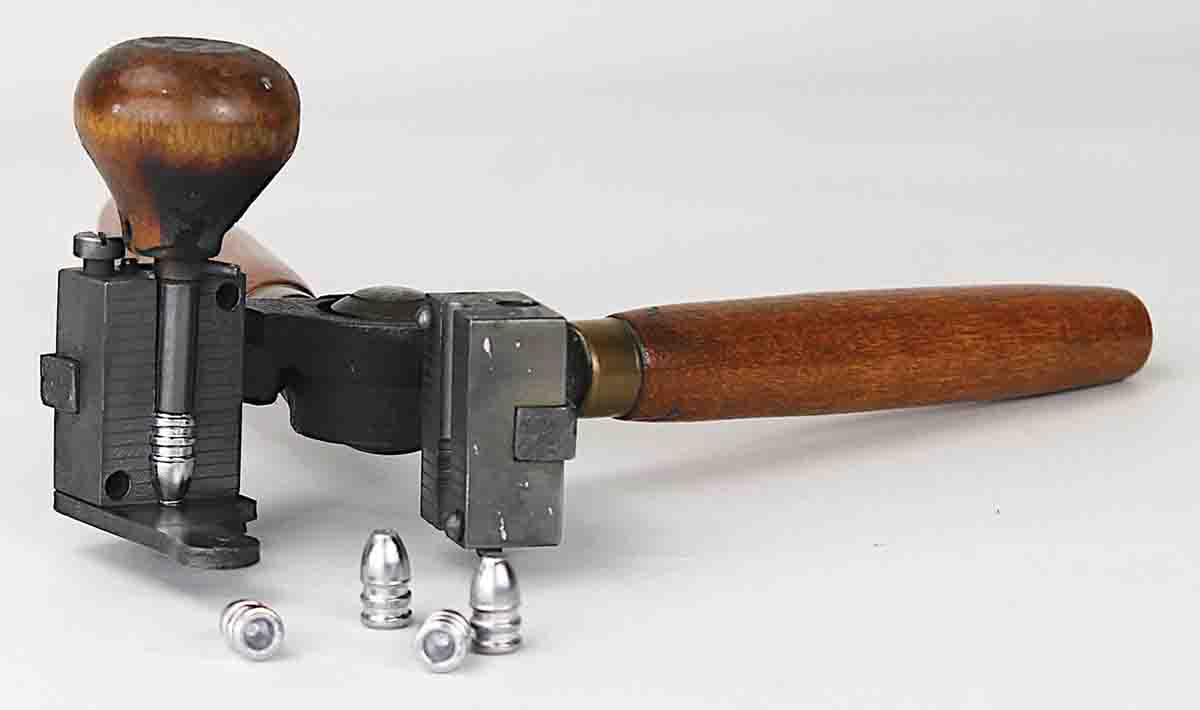
Ideal bullet mould 299155 cast hollowbase bullets that expanded enough to replicate a .317-inch diameter bullet.
These Quality Cartridge adapters are not simply reloadable cases, they are in the same class as auxiliary chambers used to shoot pistol ammunition in rifles. Quality Cartridge’s brass adapters are obviously machined, rather than drawn like a cartridge case; at about .012-inch thick. Adapter case walls are much thicker than the .008 inch wall of a measured factory .32 S&W Short case. (With only one original .32 S&W Long cartridge in my possession, I declined to dismantle it for measurement. We can surmise that both the Short and Long cases differ only in case length.) The thick adapter head is machined to accept the .22 Short blank, which upon chambering the shooter orients to fall under the firing pin strike. The blanks press-fit easily into the Quality Cartridge adapter cases, after which the case is charged with black powder or a substitute, like Pyrodex P, and a bullet seated on top. Quality Cartridge does not rate the adapters for smokeless powders.

The barrel of the Stevens Favorite is removed by unthreading the takedown screw. Replacing the barrel and breechblock permitted the easy changing of calibers.
Bullets are another matter as the .32 S&W Long utilizes a heel-base bullet, like that in the .22 Long Rifle cartridge. Heel-base bullets are reduced in diameter where they fit down inside the case, with the exposed part of the bullet the same or nearly the same diameter as the outside of the case. Pulled from a factory cartridge, a .32 S&W Short bullet heel measures .295 inch, while the exposed part that engages the lands and grooves of the barrel measures .317 inch. No major bullet manufacturer offers heel-base bullets because there are no widely popular cartridges today that use them except the .22 Long Rifle. Major manufacturers of bullet moulds have a few moulds that throw heel-base bullets, and some custom bullet casters offer them, but I found none with the specific dimensions of the .32 S&W Long. Proper bullets, then require a custom bullet mould, which from the major makers can cost $250 and more just for the tooling fees, plus another $100 and more for the mould.
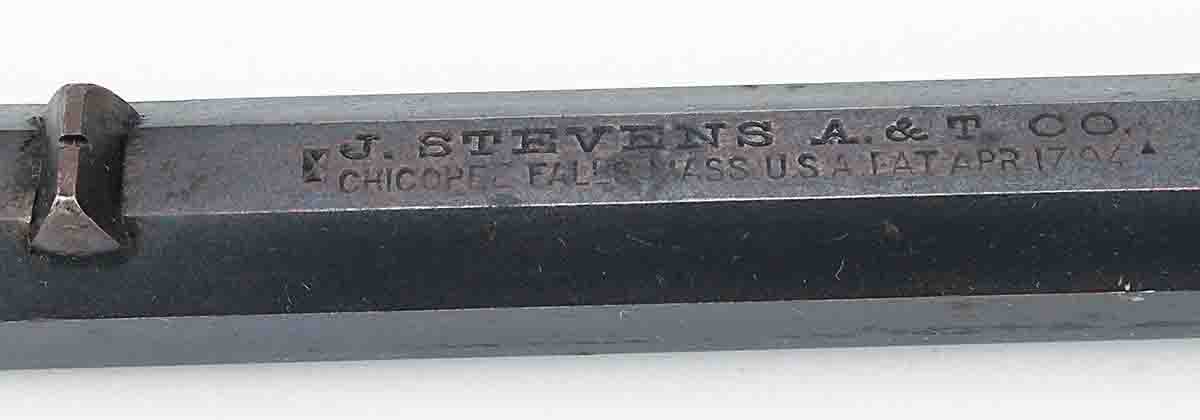
Barrel markings only “ballpark” the manufacture date to sometime between 1894 and 1915.
There’s more than one path up any mountain, and an alternate path here is the hollowbase bullet, with the Civil War era Minié ball being an example. Deliberately under bore size to permit easy, rapid reloading of fouled military rifled muskets, the conical Minié ball’s hollow base obturates (expands) under gas pressure from the burning powder to fully engage the rifling grooves. Hollowbase bullets survive today in the .38 Special hollowbase full wadcutter used in target competition. Perhaps a hollowbase bullet to fit in the rimfire adapter would “bump up” to engage the Stevens’ rifling á la the Minié ball.
My shooting buddy, Ken Riley, has an old Ideal 299155 mould that throws soft lead 75-grain hollowbase bullets of about .299-inch diameter, which he cast for me; lacking the proper sizer, pushing them through the 19⁄64-inch hole of a steel drill gauge uniformed the bullets to .295 inch to fit inside the Quality Cartridge adapters. Beveling the mouths of the adapters with an RCBS chamfering tool helped ease starting the bullets. But the question remained, would the .295-inch bullets “bump up” to .317 to grab the Stevens’ shallow rifling?
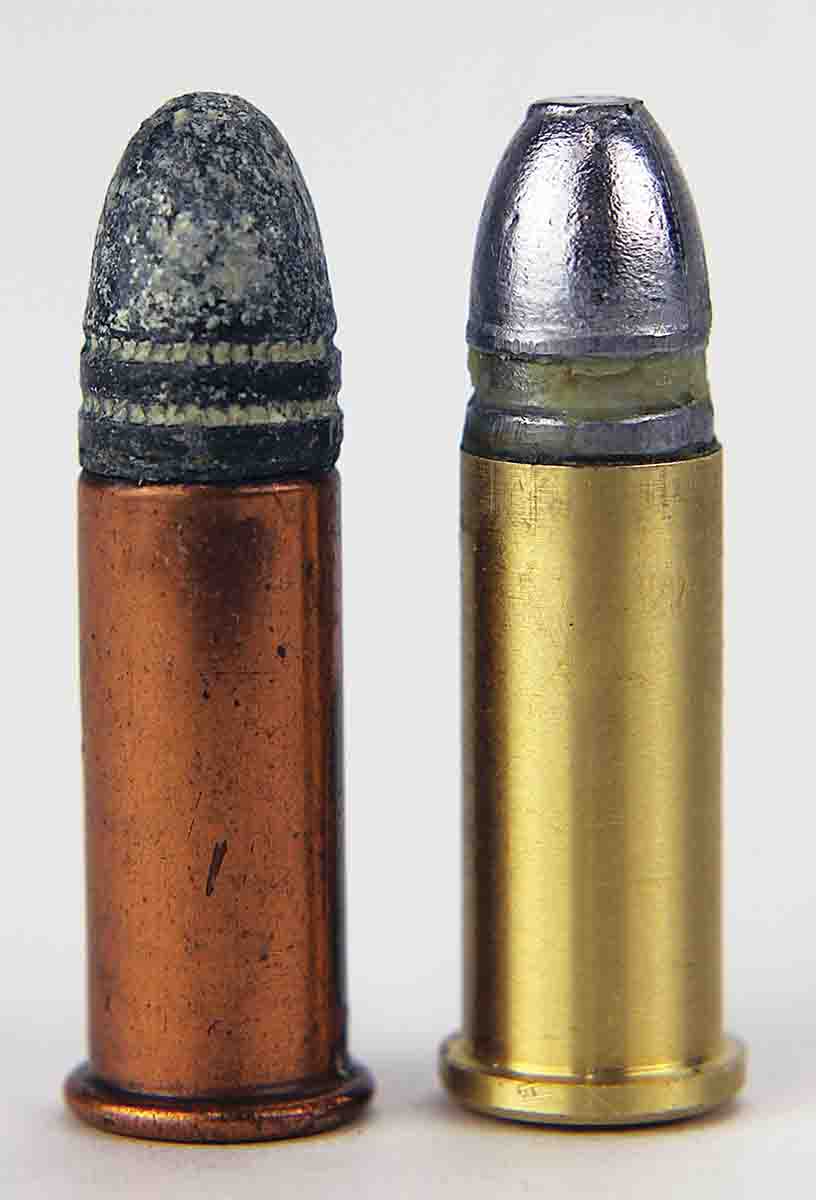
Original .32 S&W Long cartridges (left) crimped the copper case onto the bullet. Crimping the Quality Cartridge adapter (right) is neither necessary nor desirable.
The final challenge is in .32 S&W Long reloading dies – there aren’t any. But Quality Cartridge’s adapters do not require resizing after firing (again, they are auxiliary chamber adapters, not simply cartridge cases), thanks to those thick walls and low-pressure powders, and a Lee Precision .32 Smith & Wesson bullet seating die worked well enough for that task, without crimping. Digging through a box of odds and ends, shellholders turned up an anonymous one that fit the adapter rim, which measures .374 inch. The shellholder is probably for the .32 Short Colt.
Seating the .22 Short blanks is simple: hand-start, then push the adapter base down against the loading bench, using a wooden dowel inserted into the adapter, forcing the blank to seat in the adapter. Unfortunately, .22 Short blanks do not get the same manufacturing attention to uniformity as loaded ammunition, and occasionally a blank’s overly thick rim would protrude so far as to prevent the adapter from sliding into the shellholder, or a blank would fit too loosely in the adapter, necessitating exchanging the blank for another.
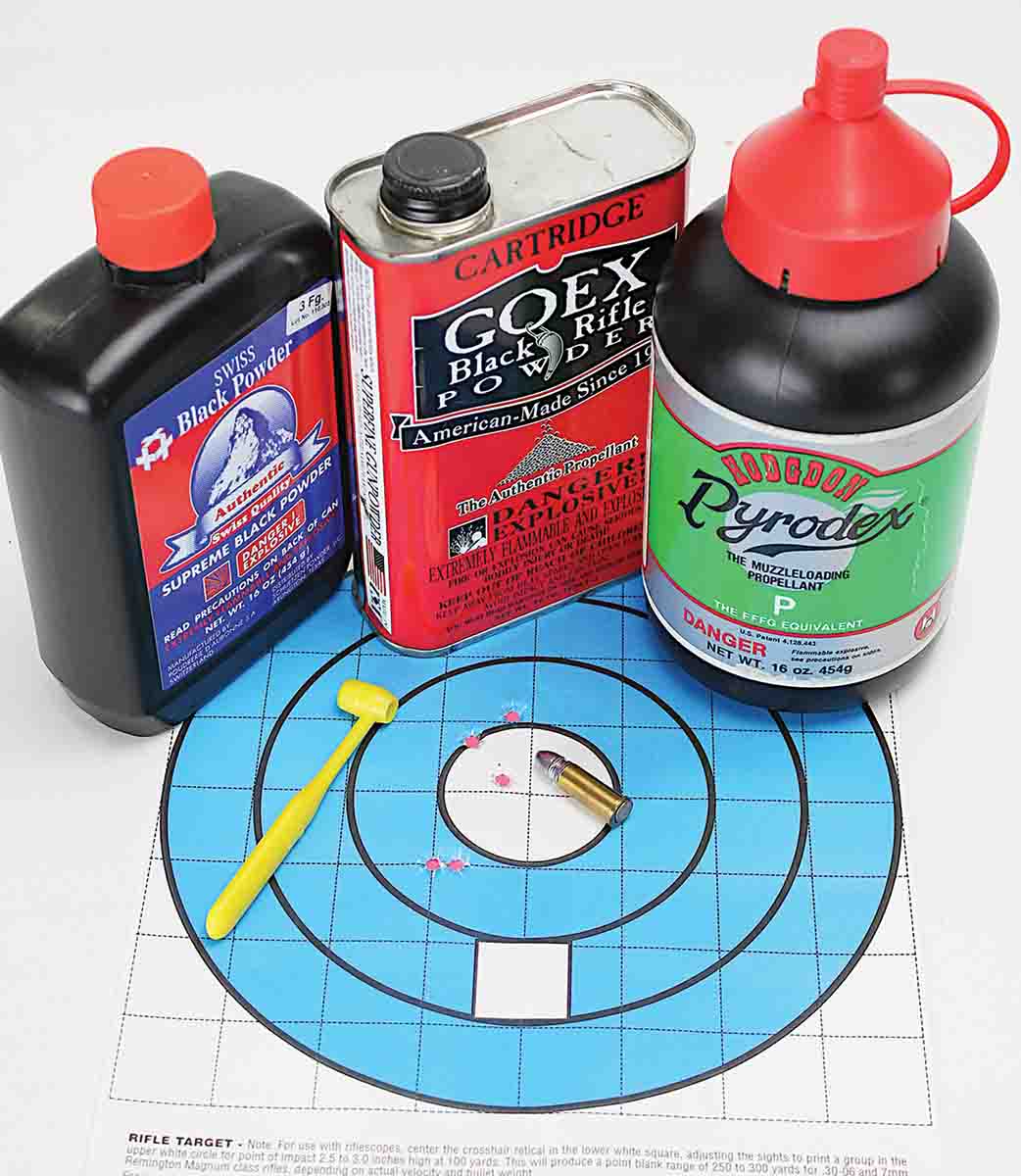
The adapters are rated only for black powder or black-powder substitutes. Vertical stringing of groups is attributed to the Favorite’s miniscule sights making precise aiming difficult.
Pyrodex P, Swiss FFFg and GOEX Cartridge powders seemed logical choices for the .32 S&W Long’s small case volume, but it wasn’t possible to approach anywhere near the original 13-grain (volume) loading of powder without extreme compression, which I did not attempt. The .5cc dipper from Lee Precision’s Powder Measure Kit filled the case to the top with 6.1 grains (volume) of Pyrodex P and 8 grains of black powders; slightly compressing the charge with a punch permitted easy bullet seating. Bullets were lubricated by filling the hollow base and lube grooves with SPG Lubricant by hand.
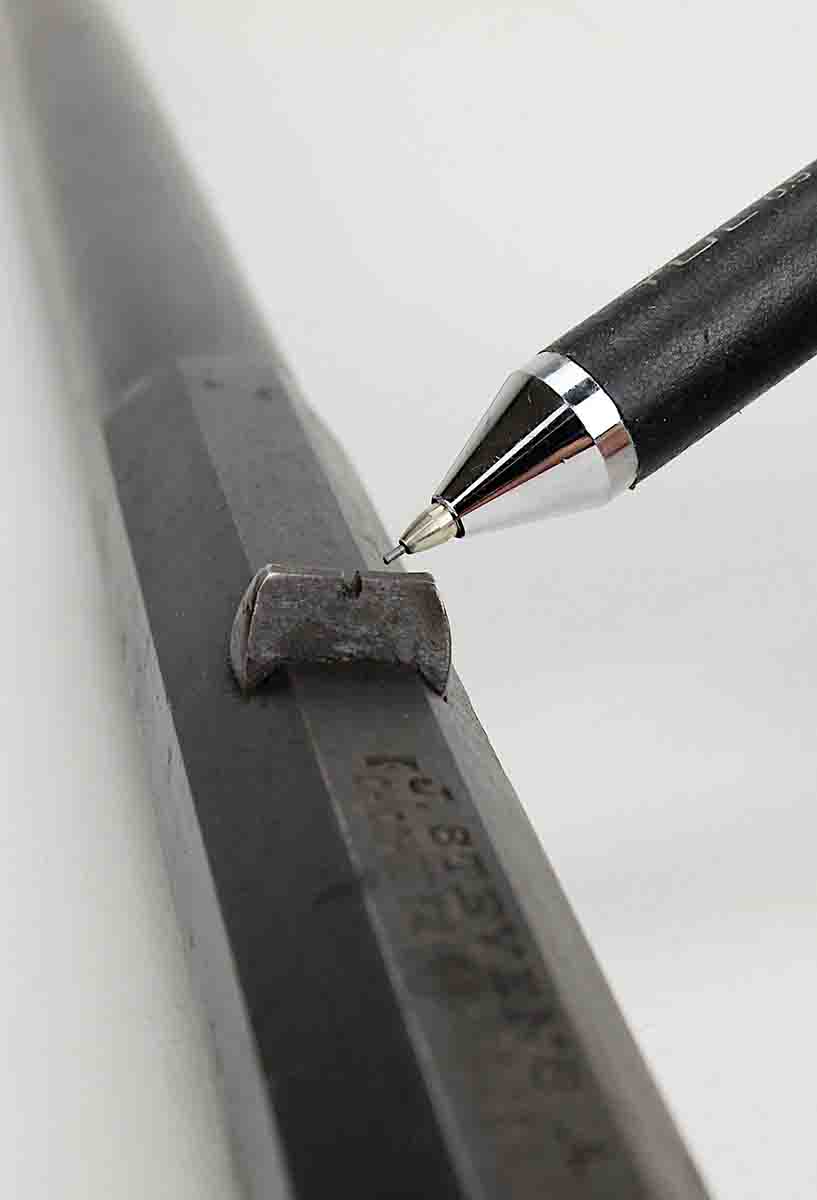
The Favorite’s rear sight notch is hardly wider than a mechanical pencil lead.
Sights on the No. 17 Favorite are best described as “considerably smaller than miniscule” and probably a challenge even for those blessed with fighter pilot vision. For this reason, exacerbated by the literally off-the-scale hard trigger pull, shooting distance was limited to 25 yards. If the bullets’ hollow bases failed to obdurate on firing, certainly bullet impacts would spread wide over the paper, and likely keyhole. Happily, the first two shots looked normal, showing bullets traveling nose-forward, and landed 5⁄8-inch apart, about 3 inches above point of aim. Five-shot groups strung vertically, certainly due to the near-invisible sights, and hovered around two and a half inches. Given my imperfect vision, the condition of the bore and the undersized bullets, that’s not a bad showing. Interestingly, the 8-grain charge of Swiss FFFg black powder sent the 75-grain bullets at the same velocity advertised for the original 80-grain bullet with a 13-grain charge.
The Quality Cartridge adapters sealed around the .22 Short blanks without a problem, blowing no gas backward toward the shooter. Adapter mouths expanded only .001 to .002 inch, bases had no expansion and there was no problem chambering the adapters again. Removing spent .22 Short blanks is easily accomplished by hand by pushing them out with a punch. Clean the adapters with a soapy hot water solution and a brush, shine them with a couple of turns of #0000 steel wool, and they’re ready to go again.
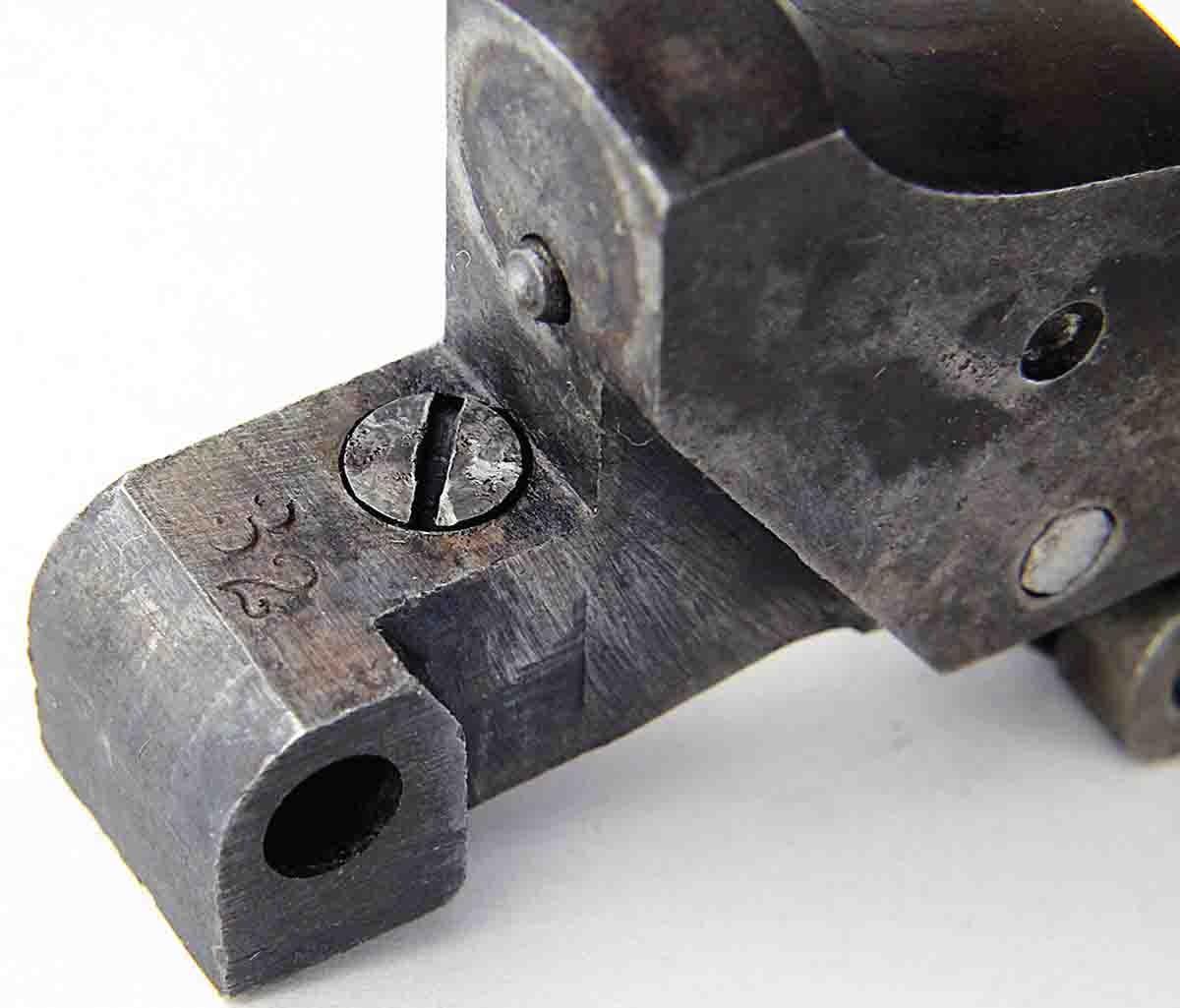
Adjusting the tension screw in the breechblock cured the Favorite’s drooping lever.
The value of the Favorite can be hard to pin down. Condition is everything and the only chambering that is still readily shootable has been the .22 Long Rifle. In 2022, rifles sold online for as little as $209, though most guns appear to be fetching $300 to $375. There are several reasons the Stevens Favorite is still affordable, the major reason being the obsolete .25 and .32 rimfire chamberings - they are considered wall hangars because there is no ammunition for them. But the Quality Cartridge rimfire adapters can get them down off the walls and out to the range and field again.
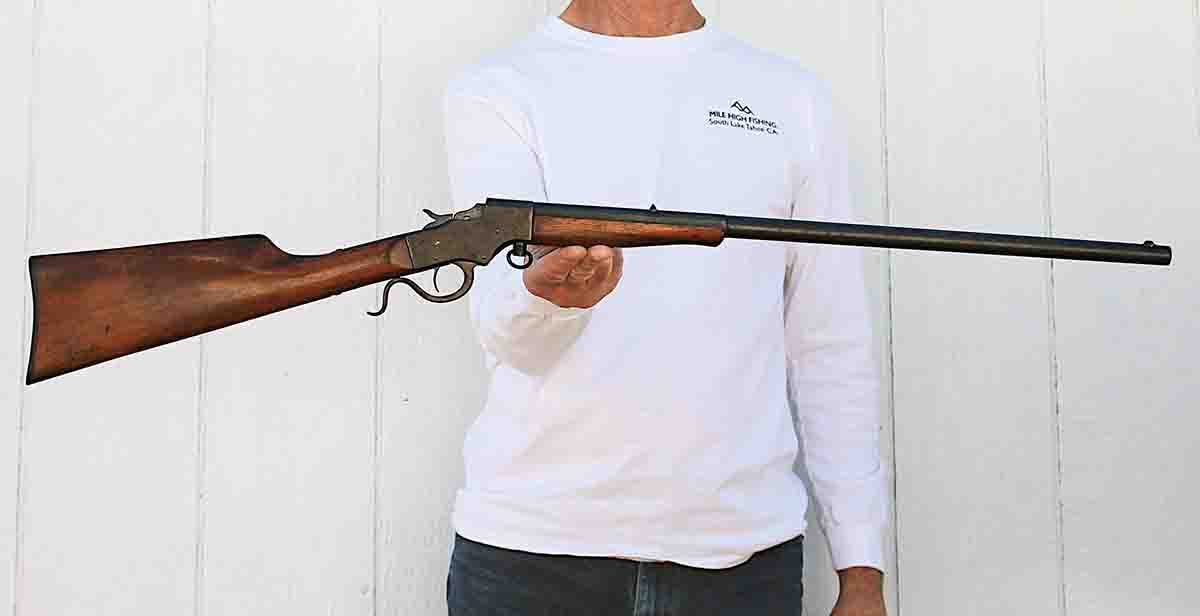
Marketed as a “Boys’ Rifle” at 64 ounces, the Favorite weighs about the same as a large handgun.













.jpg)
.jpg)


